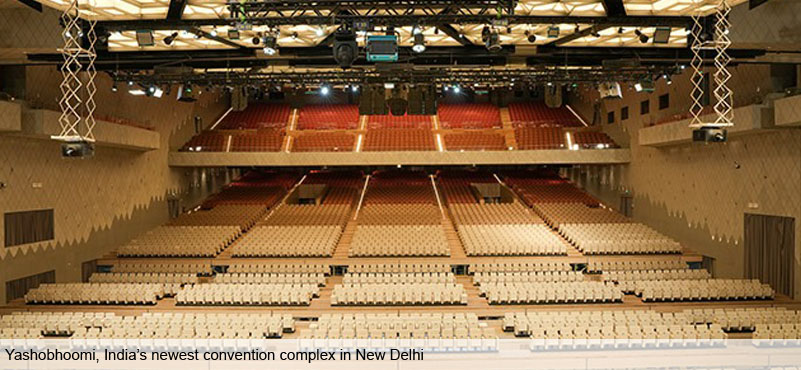The hospitality sector holds immense potential to help achieve the government’s target of raising tourism’s contribution to 10 percent of India’s GDP by 2030, a goal recently reiterated by Union Minister of Culture and Tourism, Gajendra Singh Shekhawat ji. FHRAI seeks to support this vision by strengthening domestic tourism, expanding services beyond major metros, and encouraging investments in Tier II and Tier III cities. Realising this ambition, however, depends on the creation of a consistent and equitable tax environment. The existing Goods and Services Tax (GST) framework continues to place structural and financial pressure on the industry, limiting its ability to expand.

President, FHRAI
Three key areas require urgent reform: delinking Food and Beverage (F&B) GST from room tariffs, restoring Input Tax Credit (ITC) benefits, and regularising past GST dues caused by interpretational ambiguities.
The current GST system links restaurant tax rates to hotel room tariffs. Restaurants in hotels charging more than ₹7,500 per night are taxed at 18 percent with ITC, while those below this tariff are taxed at 5 percent without ITC. This linkage creates unnecessary complexity, distorts pricing, and discourages tariff revisions during periods of high demand. Many hotels are forced to maintain lower tariffs to avoid pushing their restaurants into the higher GST bracket, which reduces both profitability and tax revenue.
Allowing all hotel-based restaurants to independently choose between 18 percent GST with ITC or 5 percent without ITC would create fairness and flexibility. Such a structure would let hotels adjust room prices according to market demand without affecting restaurant taxation. About one-third of new developments in the sector are taking place in the upscale and luxury segments, meaning most would remain under the 18 percent bracket even after delinking. At the same time, mid-segment hotels would gain the flexibility to revise tariffs during peak seasons, leading to a potential increase of more than ₹4,074 crore in annual GST collections.
Another major concern for the industry is the withdrawal of ITC following the reduction of GST on rooms priced below ₹7,500 from 12 percent to 5 percent. While this change aimed to enhance affordability, it disrupted the seamless credit mechanism that underpins GST. Without ITC, hotels cannot claim credit for input taxes paid on rent, maintenance, utilities, and supplies, increasing their cost burden. Smaller establishments, which make up a significant portion of India’s hospitality sector, are the hardest hit.
 Restoring ITC, even under the 5 percent rate, would correct this imbalance and encourage reinvestment. Recognising hotel rooms as “plant and machinery” for ITC eligibility would further reflect the capital-intensive nature of the industry. Revising the room tariff threshold from ₹7,500 to ₹12,500 is also necessary, considering inflation and currency depreciation since 2017. The current threshold no longer represents the actual market conditions or the spending capacity of domestic and international travellers.
Restoring ITC, even under the 5 percent rate, would correct this imbalance and encourage reinvestment. Recognising hotel rooms as “plant and machinery” for ITC eligibility would further reflect the capital-intensive nature of the industry. Revising the room tariff threshold from ₹7,500 to ₹12,500 is also necessary, considering inflation and currency depreciation since 2017. The current threshold no longer represents the actual market conditions or the spending capacity of domestic and international travellers.
The issue of pending GST demand notices also continues to affect hotels across the country. Many of these disputes stem from interpretational differences rather than non-compliance. Ambiguities over “declared tariff” versus “transaction value” and the classification of “specified premises” have led to multiple cases of misinterpretation. Online travel agencies often display inflated rates that include commissions, even though the hotel receives a lower amount within the exempted range. This discrepancy has led to inflated demand notices and prolonged disputes.
GST rates for hospitality in India are one of the highest in the world. This makes both domestic and inbound tourism in India very expensive. India is facing tough competition from neighbouring destinations especially due to the higher rate of GST in India and other factors which make the total tourism package expensive to India.
 The tourism industry must be kept at the lowest possible GST slabs with full setoffs available. This will keep the industry’s indirect tax competitive to East Asian countries. This will make the industry pricing attractive to inbound leisure tourists, to large events and also to domestic tourists when compared to international destinations.
The tourism industry must be kept at the lowest possible GST slabs with full setoffs available. This will keep the industry’s indirect tax competitive to East Asian countries. This will make the industry pricing attractive to inbound leisure tourists, to large events and also to domestic tourists when compared to international destinations.
A rational and transparent GST framework is essential for the sector’s long-term sustainability. Hospitality drives local employment, supports small businesses, and promotes cultural and regional integration through tourism. When taxation aligns with operational realities, hotels and restaurants can reinvest in infrastructure, expand into new markets, and contribute more effectively to the economy.
Implementing these reforms would create a predictable and fair taxation environment. Delinking F&B GST from room tariffs, restoring ITC, and clearing legacy disputes are not just technical corrections but fundamental steps toward improving business confidence and encouraging investment.
A strong and well-structured hospitality sector is vital for India’s economic and social development. With the right tax reforms, the industry can realise its full potential to contribute meaningfully to the government’s GDP target for tourism, generate employment across regions, and strengthen India’s position as a global tourism destination.








